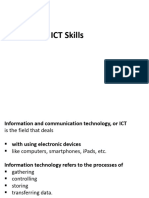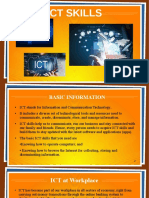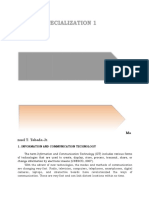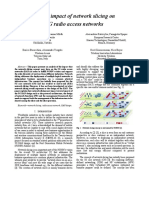0% found this document useful (0 votes)
16 views6 pages9th Class Chapter 5
Chapter 5 discusses the role of Information and Communication Technology (ICT) in daily life, outlining its components, uses, advantages, and disadvantages. It highlights the impact of ICT across various sectors such as education, healthcare, and business, while also addressing the importance of safe usage and career opportunities in the field. The chapter concludes by emphasizing the transformative power of ICT in modern society.
Uploaded by
snehnegi0211Copyright
© © All Rights Reserved
We take content rights seriously. If you suspect this is your content, claim it here.
Available Formats
Download as PDF, TXT or read online on Scribd
0% found this document useful (0 votes)
16 views6 pages9th Class Chapter 5
Chapter 5 discusses the role of Information and Communication Technology (ICT) in daily life, outlining its components, uses, advantages, and disadvantages. It highlights the impact of ICT across various sectors such as education, healthcare, and business, while also addressing the importance of safe usage and career opportunities in the field. The chapter concludes by emphasizing the transformative power of ICT in modern society.
Uploaded by
snehnegi0211Copyright
© © All Rights Reserved
We take content rights seriously. If you suspect this is your content, claim it here.
Available Formats
Download as PDF, TXT or read online on Scribd
/ 6























































































